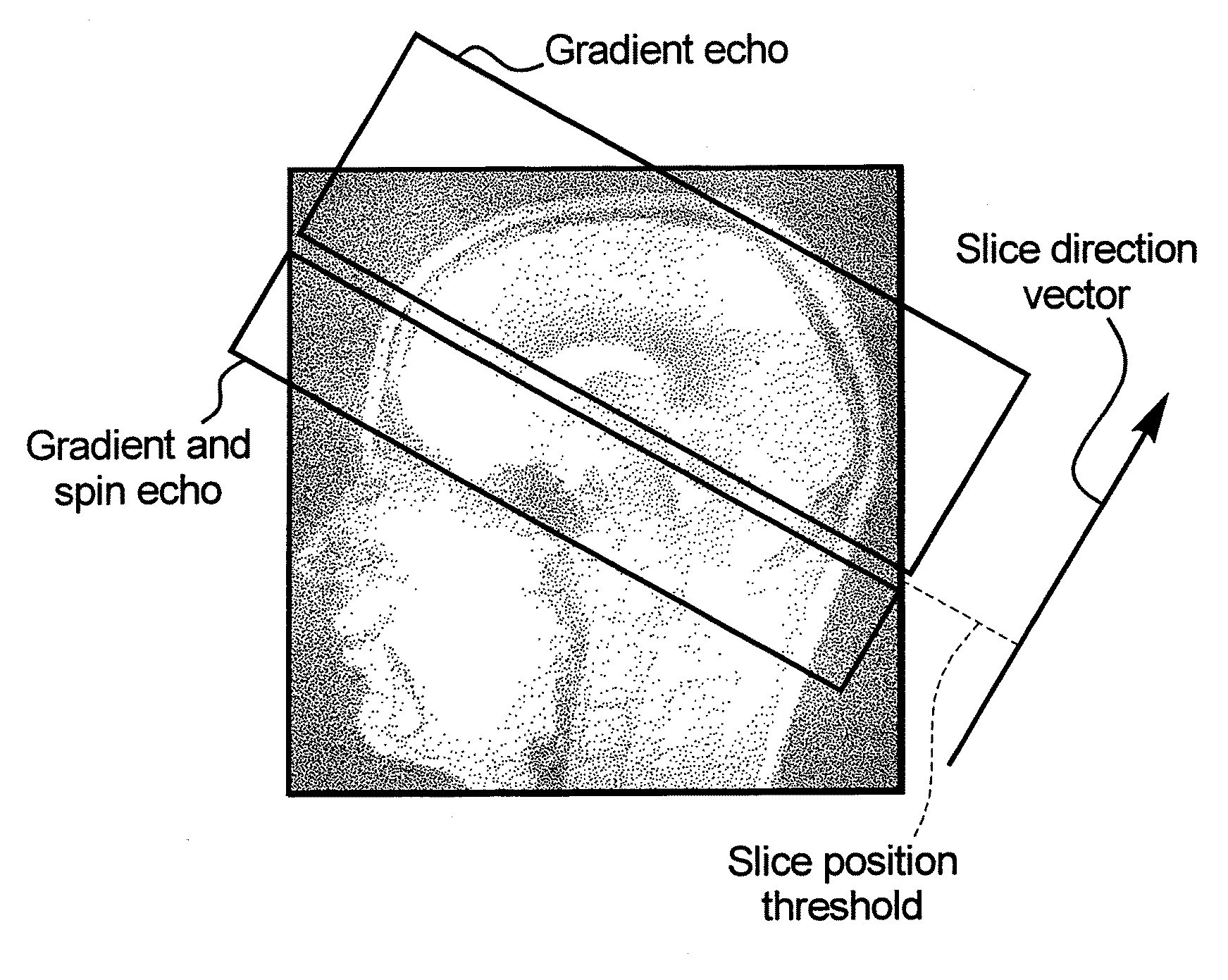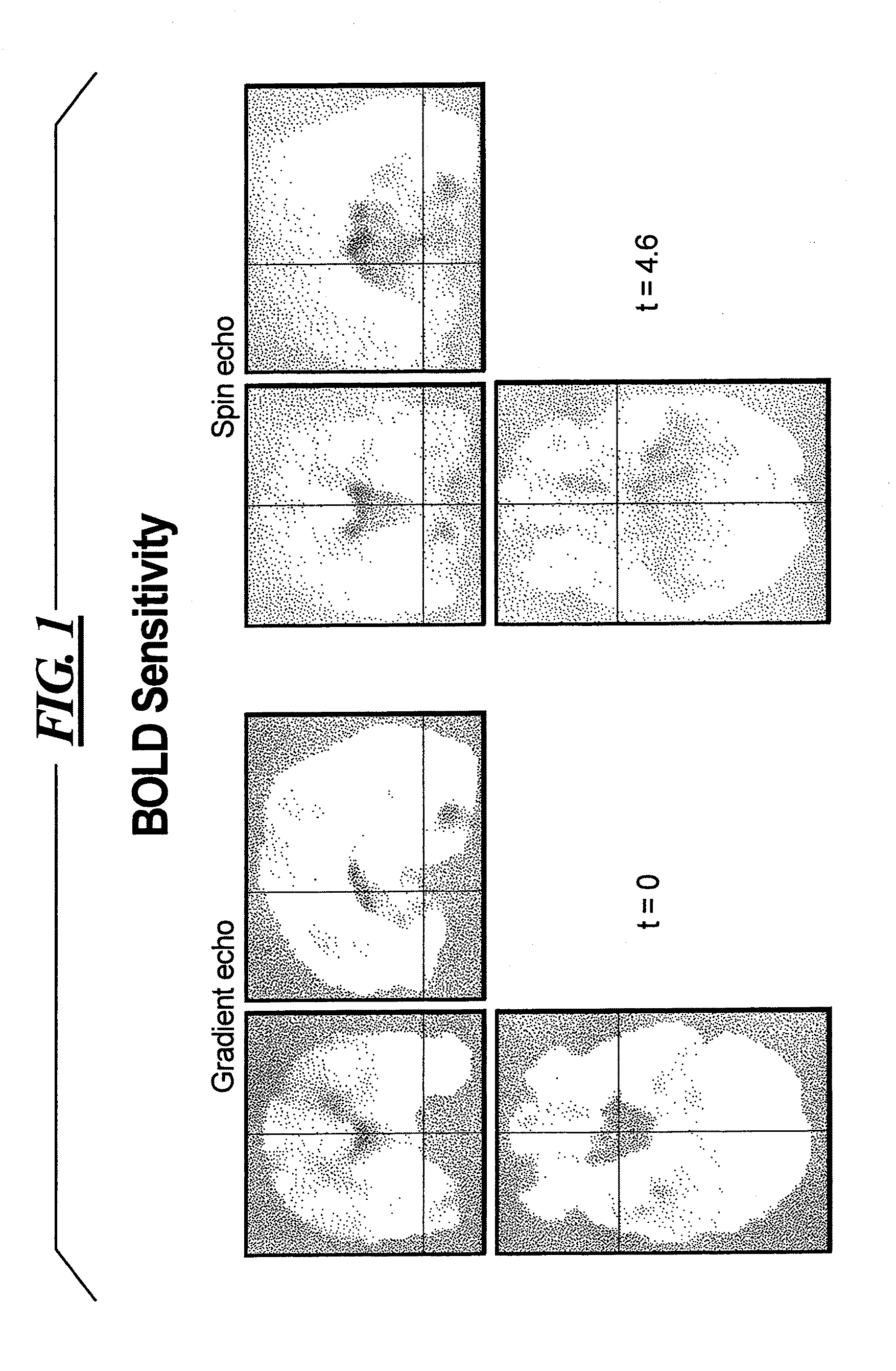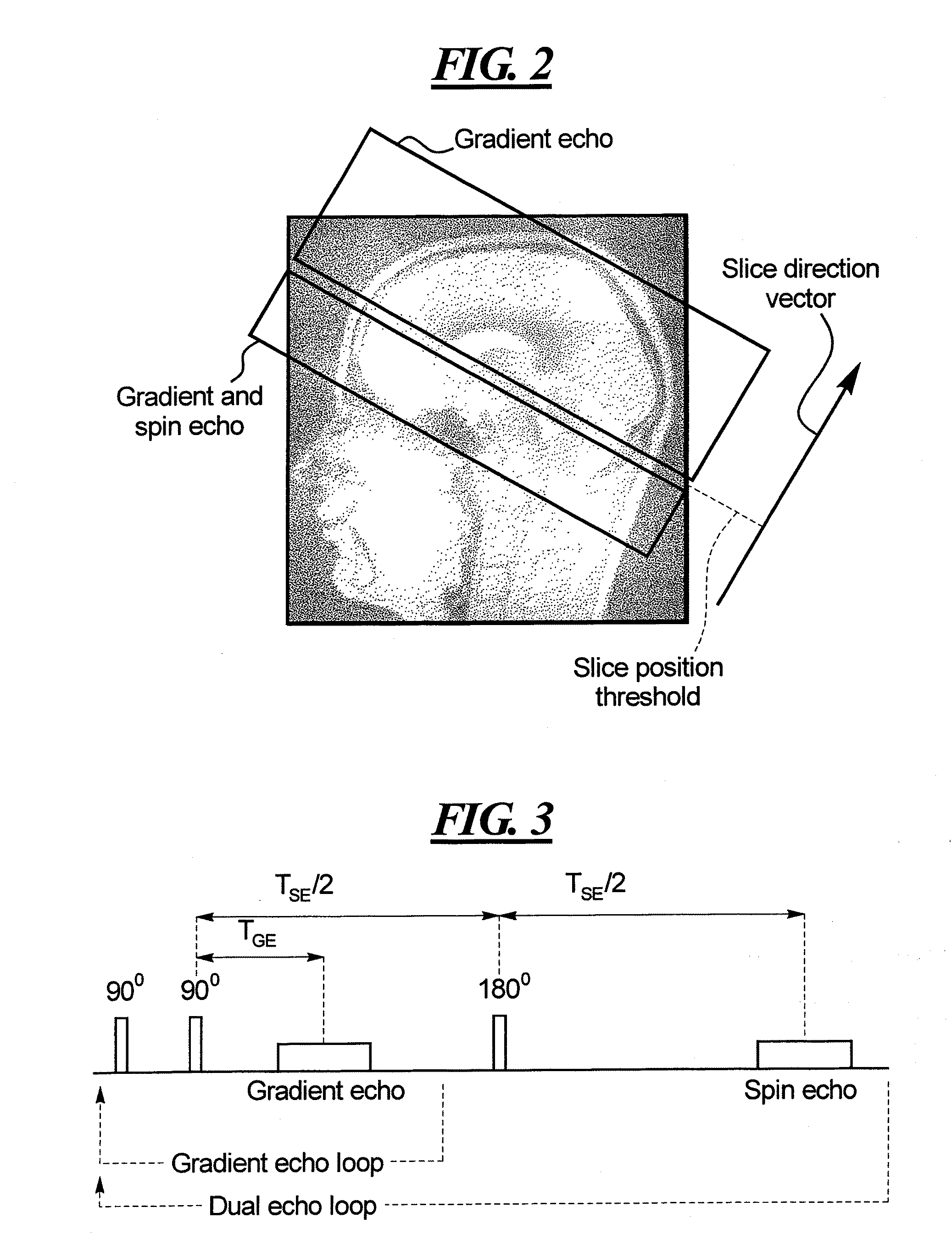Magnetic resonance method and apparatus using dual echoes for data acquisition
a magnetic resonance and data acquisition technology, applied in the field of magnetic resonance imaging methods and systems, can solve the problems of insufficient temporal resolution, inefficient acquisition scheme, and particularly problematic, and achieve the effect of improving the overall image quality
- Summary
- Abstract
- Description
- Claims
- Application Information
AI Technical Summary
Benefits of technology
Problems solved by technology
Method used
Image
Examples
Embodiment Construction
[0023]FIG. 6 is a block diagram schematically illustrating the basic components of a magnetic resonance imaging system that is suitable for implementing the method in accordance with the present invention. The basic structure of the components is known, but either or both of the system computer 20 and the sequence control 18 is / are appropriately programmed with a control protocol for operating the system in accordance with the present invention.
[0024]A basic field magnet 1 generates a temporally constant, strong magnetic field for polarization or alignment of the nuclear spins in the examination region of a subject (such as, for example, a portion of a human body to be examined). The high homogeneity of the basic magnetic field that is required for the nuclear magnetic resonance measurement is defined in a spherical measurement volume M into which the portions of the human body to be examined are introduced. Components known as shim plates (not shown) made from ferromagnetic materia...
PUM
 Login to View More
Login to View More Abstract
Description
Claims
Application Information
 Login to View More
Login to View More - R&D
- Intellectual Property
- Life Sciences
- Materials
- Tech Scout
- Unparalleled Data Quality
- Higher Quality Content
- 60% Fewer Hallucinations
Browse by: Latest US Patents, China's latest patents, Technical Efficacy Thesaurus, Application Domain, Technology Topic, Popular Technical Reports.
© 2025 PatSnap. All rights reserved.Legal|Privacy policy|Modern Slavery Act Transparency Statement|Sitemap|About US| Contact US: help@patsnap.com



